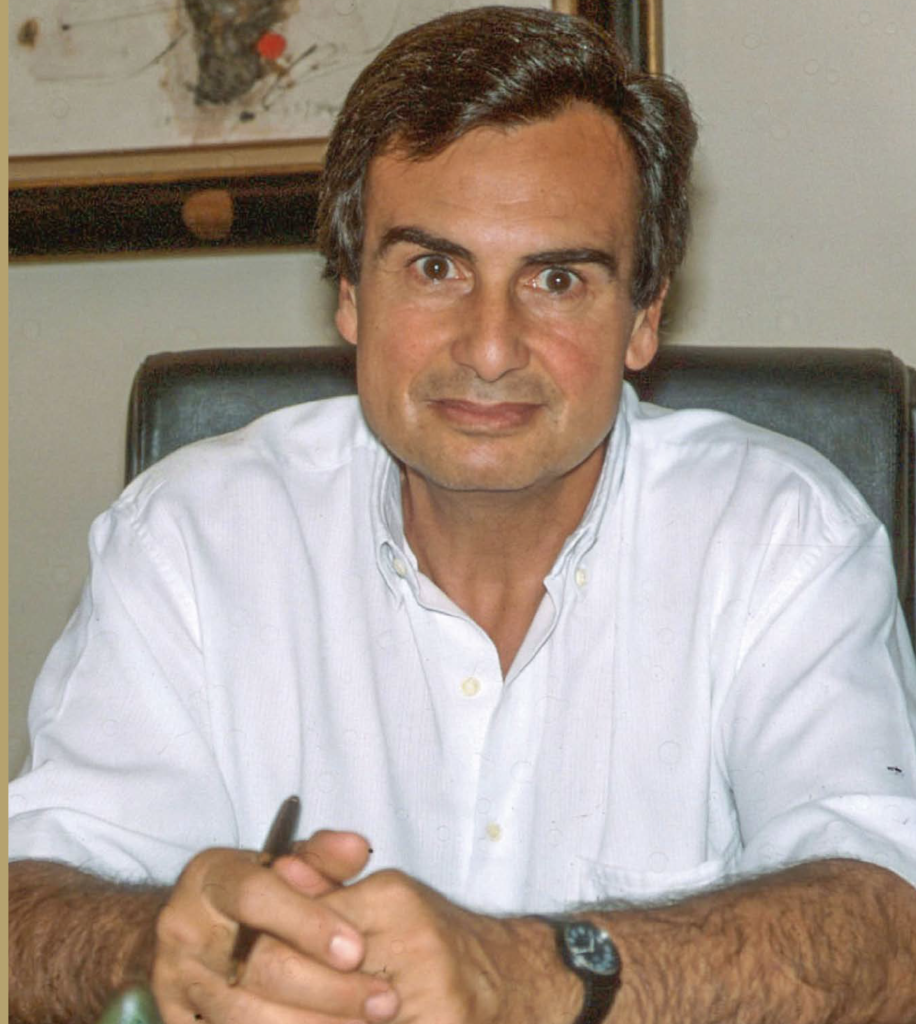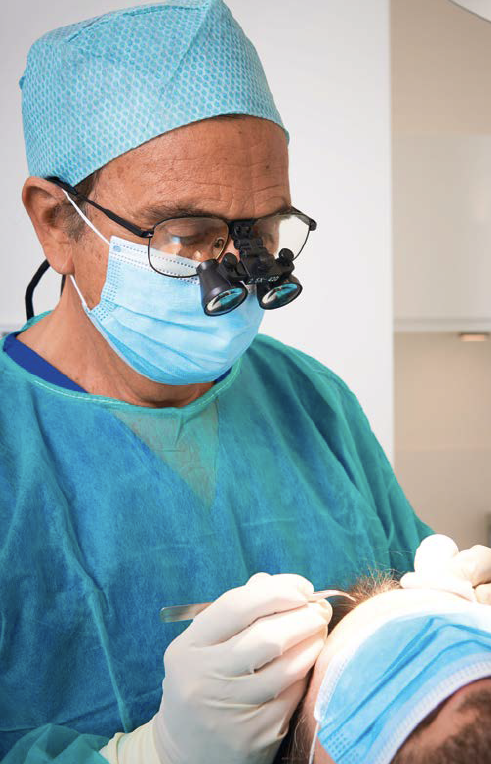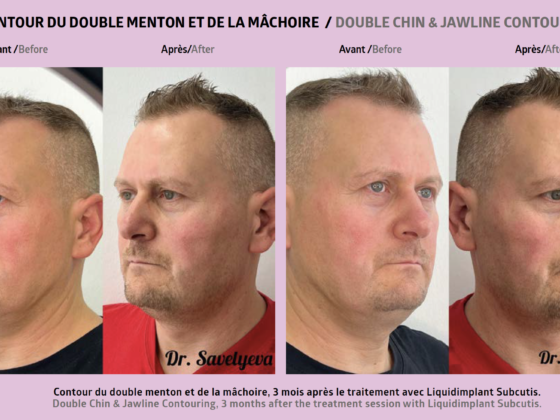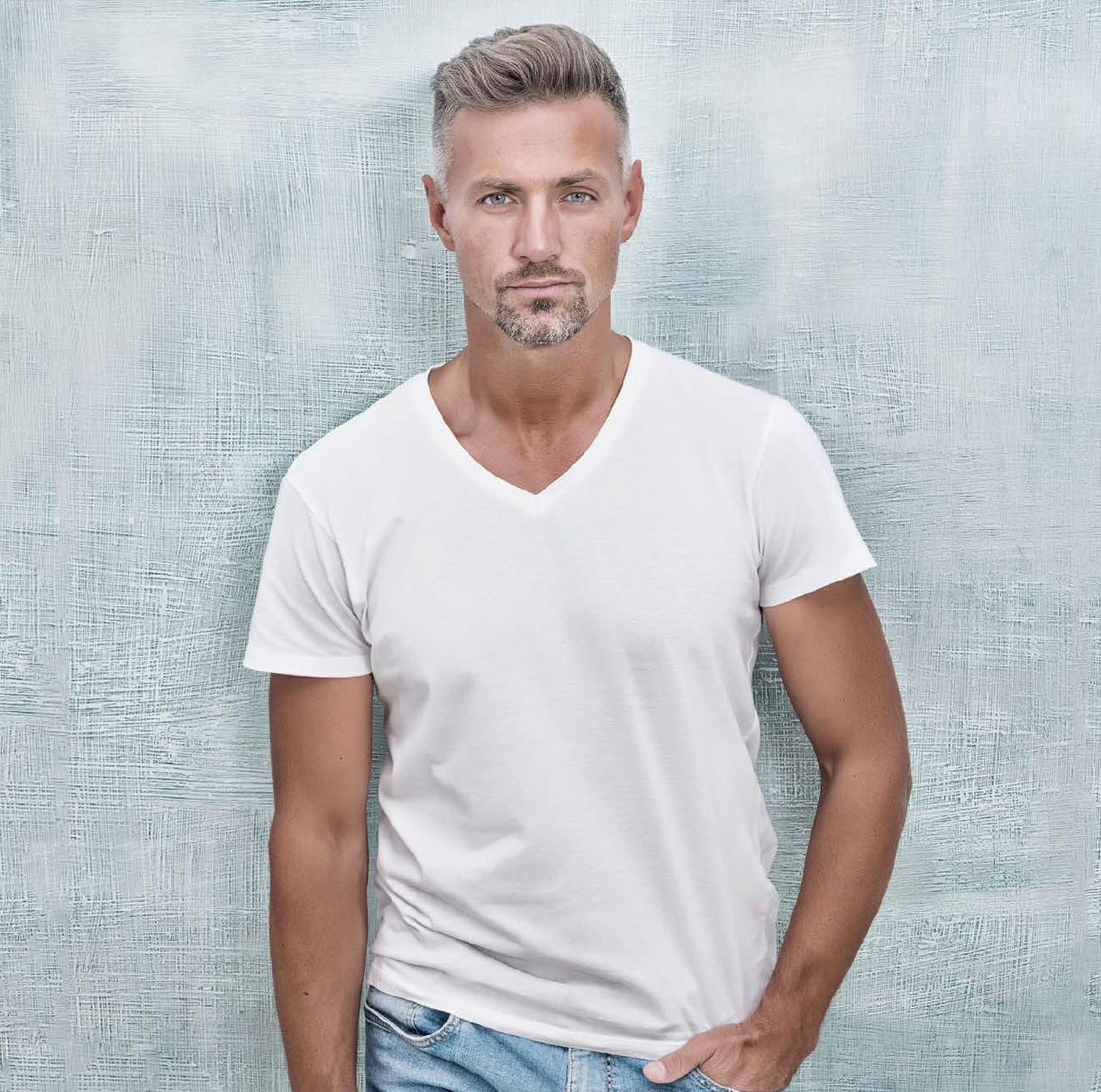by Thierry Piolatto
Dedicating his life’s work to the scalp and hair.
Doctor Pierre Bouhanna is a surgical dermatologist specialising in the scalp. This passion for the hair and scalp was stirred up by two mentors: the first was Professor René Touraine, who often travelled to the USA. In 1974, he said, “Why don’t you get into hair transplantation? In the USA it’s very well developed, but nobody does it in France!” Professor Touraine supervised Bouhanna’s doctorate (“The scalp. Permanent alopecia and how to treat it.”) in his department in 1976. His second mentor was his uncle, Doctor Jules Nataf, an aesthetic surgeon in Nice, who took him on as his assistant. During this time, in 1976, he published an article – “Scalp surgery: critiques and proposals” – in an aesthetic surgery journal. He caught the bug and hair transplants soon became his passion. In 1982, he developed a technique – the Phototrichogram – to measure all the parameters of the scalp in order to im-prove surgical techniques. This macro-photogra-phic system accurately studies the areas to treat, a procedure that is now widespread with the tricholab®. Later, he would develop a multi-factor classifi cation to better analyse the scalp.

A third mentor…This was Professor Jean Civatte, the big boss of the dermatology department at Saint Louis hospital, who supported him by enabling him to develop the scalp centre. In 1998, he created a university degree course in scalp surgery at Paris VI university (Pitié-Salpêtrière hospital), which he still runs.
When you are passionate about something, you seek and often you find!
He is passionate about the diversity of surgical demands as well as about female alopecia, African women who destroy their hair (traction alopecia) and, more recently, women who have had breast cancer. There are those who have had chemotherapy and who have grown back a full head of hair, and those who have taken a certain hormone for 5 years and who have developed androgenetic alopecia. This type of alopecia can, thankfully, benefit from hair transplantation.
Why does hair fall out?
Here is a short anecdote: “A 45-year-old patient came to see me for a hair graft in Poland. When I saw him in the waiting room, I thought he must have syphilis. I confirmed this with a blood test and prescribed antibiotics. Several months later my patient came back…with a full head of hair! His hair had fallen out because of the syphilis, so he didn’t need a transplant in the end. This just shows that a medical diagnosis is essential before performing any treatments.”We are getting older and older, and people want to keep their full head of hair. Dr Bouhanna says that it is easier to operate on an 80-year-old patient than a 20-year-old, as they have really thought about what they want to do and there will be no major evolutions in the state of their hair. A 20-year-old has 60 years’ worth of changes ahead of them. It is important not to remove any grafts too early: this is a capital we do not want to ruin!
Synthetic hair: a new outlook?
“My first publications about synthetic hair were 30 years ago. Articles about synthetic hair developed in Japan highlighted their advantages and disadvantages. After conducting a study, I concluded at the time that synthetic hair transplantation was not dangerous, but it was still not convincing enough. I preferred to wait until much later, when synthetic hair developed in Israel came onto the scene, as it is better tolerated. The scalp is one of the organs with the most antibodies and which rejects foreign bodies the most. It acts as a protective shield. Synthetic hair should only be used when there are no other solutions available. The indications must be properly set, and a test should be carried out beforehand.”
From which area do we lose the most hair?
Primarily from the temples and crown (leaving a “Hippocratic wreath” of hair). This type of hair loss is connected with male hormones. When a person is genetically receptive to testosterone, they develop androgenetic alopecia. Conversely, South American Indians and Asians are less prone to baldness. We could use genetics to identify and eventually predict baldness, but unfortunately we do not yet know how to prevent it. We can only slow it down and correct it.
In Africa, there are ever more cases of alopecia due to the fashion of tightly-pulled hair styles and hair products that damage the hair. Africans dream of having straight hair…

What future projects do you have?
“I will continue researching, proving and training in my three centres: here at the CCMC with my son Eric, studying pathologies at the Saint Louis hospital, and teaching the university degree at Pitié Salpêtrière hospital.” In 2015, he was awarded the “Platinum Award” from the ISHRS (International Society of Hair Restoration Surgery) for his work. He is also working on growing hair in his research centres, but after a few days the cultivated hair stops growing, and he does not know why. It is an interesting research axis. “My dream is to train surgeons in the metaverse…”
MAJOR ADVANCES
- 1939: Dr Okuda (Japan) described autologous grafts for the first time, in the case of traumatic alopecia.2.
- 1953: Dr Fujita (Japan) corrected lepers’ eyebrows with micrografts
- 1959: Dr Orentreich (USA) described grafts using a cylindrical punch
- 1989: Dr Bouhanna (France) developed unshaven long-hair FUT (FUL)
- 2002: Dr Rassman (USA) developed shaven FUE
- In 2022: We have two non-opposable procedures, which are matched to patients according to their advantages and disadvantages: FUT or FUE strips.
DR PIERRE BOUHANNA HAS WRITTEN 11 BOOKS AND 133 ARTICLES, INCLUDING
- “Greffes à cheveux longs immédiats” about unshaven long-hair FUT grafts (FUL)
- “Les greffes de cheveux chez les patients afro-américains” about grafts for African American patients
- “L’alopécie après certains traitements anticancéreux” about grafts for treating androgenetic alopecia after breast cancer
- “The Phototrichogram: an objective technique used for hair replacement surgery evaluation”
- “Multifactorial Classification of Male and Female Androgenetic Alopecia”
- A few titles of books by Dr Bouhanna
- “Chirurgie du cuir chevelu par microgreffes“. Encyclopaedia of oral and maxillofacial surgery
- “The alopecias: Diagnosis and treatments” with Dr Eric Bouhanna. CRC Press Editions
- “Chirurgie de la Calvitie” (Surgery for baldness) with Dr JC Dardour. Editions Springer-Verlag
- “Pathologie du cheveu et du cuir chevelu” (Pathologies of the hair and scalp) with Dr P. Reygagne. Editions Masson
- “Garder et retrouver ses cheveux. Les nouveaux traitements” (Maintain and thicken your hair. New treatments). Editions Springer
- “Soigner et préserver ses cheveux. Les nouveaux traitements du cheveu” (Care for and preserve your hair. New hair treatments). Editions ALPEN
- Les Alopécies : de la clinique au traitement” (Alopecia: from clinic to treatment). Editions MED’COM
WHERE TO FIND HIM?
CCMC – Dr Pierre Bouhanna
23 Av. Niel, 75017 Paris bouhanna.com 01 42 27 15 44









